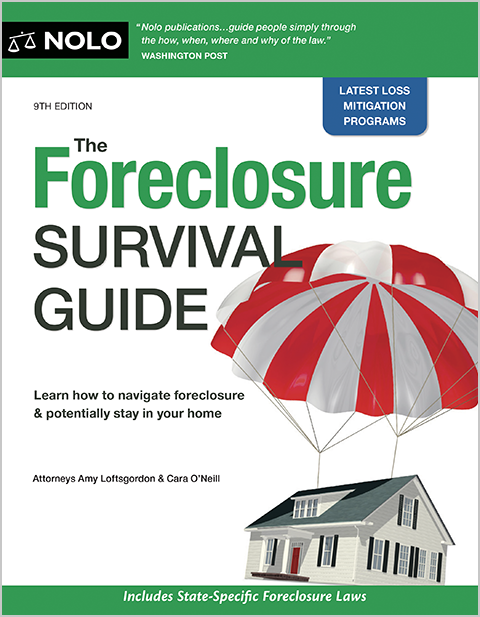If you don't have insurance coverage on your home, the lender can get a policy and then charge you for it.
Most banks and lenders require a borrower to have and maintain homeowners' insurance as a condition for getting a mortgage loan. That's because banks don't want to lend money unless they're sure their investment (the home) is protected.
If you let this insurance coverage lapse, the loan servicer can order coverage at your expense. This type of insurance is called "force-placed" or "lender-placed" insurance (LPI). (Lenders and servicers usually refer to this insurance as LPI, while borrowers usually call it force-placed insurance.) The servicer can then charge you for the cost of the force-placed insurance.
Force-placed insurance is expensive and following a rise in unaffordable or unattainable insurance policies due to climate-related disasters and other factors, it's becoming increasingly common. However, federal law restricts when and how servicers may purchase lender-placed insurance on your behalf. Also, homeowners must receive specific notices before the servicer buys a force-placed insurance policy.
- What Is Force-Placed Insurance vs. Regular Homeowners' Insurance?
- Why Is Force-Placed Insurance Necessary?
- What Does Force-Placed Insurance Cover?
- What Federal Laws Govern Force-Placed Insurance?
- When Can a Bank Force You to Have Insurance?
- What Are Borrower Rights Under These Federal Laws?
- How Do I Get Rid of Force-Placed Insurance?
- Can I Get a Refund on Force-Placed Insurance?
- How to Avoid Lender-Placed Insurance in the First Place
- When to Talk to an Attorney
What Is Force-Placed Insurance vs. Regular Homeowners' Insurance?
Most mortgages and deeds of trust require that the borrower maintain adequate homeowners' insurance on the home to protect the lender's interest in case of fire or another casualty. This type of insurance also covers the loss of your personal property if it's stolen, damaged, or destroyed.
However, if you let your regular homeowners' insurance coverage lapse, assuming you don't have an escrow account, the servicer can purchase force-placed insurance coverage. This insurance policy replaces a borrower's homeowner's insurance policy that has lapsed, was insufficient, or has been canceled.
Under What Circumstances Would a Lender Force Place Insurance on My Home?
The following are a few examples of when a servicer might put force-placed insurance on your home:
- You don't have a homeowners' policy in place because you didn't buy one, the insurer canceled your policy when you didn't pay the renewal premium, or the insurer didn't renew your policy.
- The lender hasn't received proof of insurance coverage—even though you might have coverage in place.
- You have a homeowners' insurance policy in place, but the amount of coverage, deductible, or type of coverage doesn't meet the lender's requirements.
In any of these situations, the mortgage servicer can force-place insurance.
Why Is Force-Placed Insurance Necessary?
Force-placed insurance is primarily necessary to protect the lender's financial interests in the mortgaged property. If the home is damaged or destroyed while uninsured, money isn't available for repairs or rebuilding, leading to a big financial loss for the lender.
What Does Force-Placed Insurance Cover?
Again, force-placed insurance protects your mortgage lender's interest in the loan collateral (your home). It pays the lender if the property is damaged or destroyed.
But force-placed insurance doesn't cover your personal belongings, like clothing or household items. Lender-placed insurance also doesn't have liability coverage for instances where the homeowner is responsible for damages or injuries to others.
Lender-placed insurance most often comes into play when:
- the borrower is struggling financially
- the owner abandons the home, or
- when the borrower is in the early stages of foreclosure.
Ultimately, force-placed insurance provides only very basic coverage, which protects the financial interests of the lender—not you. Plus, this kind of insurance policy tends to be costly because of the uncertainty about what might happen to the home if the borrower isn't keeping up with the bills. This is not a policy you want on your home.
What Federal Laws Govern Force-Placed Insurance?
The Real Estate Settlement Procedures Act (RESPA), 12 U.S.C. § 2605 (2025), and its implementing regulation, Regulation X, 12 C.F.R. § 1024.37 (2025), govern force-placed insurance at the federal level.
When Can a Bank Force You to Have Insurance?
Under federal law, the servicer must reasonably believe that the borrower has failed to maintain insurance coverage on the home before purchasing a force-placed insurance policy. (12 C.F.R. § 1024.37(b) (2025).) For example, if the borrower's insurance agent or provider contacts the servicer to inform it that the bill is overdue, this contact would provide a reasonable basis for the servicer to think that coverage isn't in place.
What Are Borrower Rights Under These Federal Laws?
Under federal law, the servicer must send two notices to the borrower before buying force-placed insurance. And if your mortgage loan has an escrow account, the servicer generally has to keep the existing policy in place rather than purchasing a force-placed policy.
When Must the Borrower Be Provided With a Force-Placed Insurance Notice?
The servicer must send the first notice at least 45 days before purchasing a force-placed insurance policy. (12 C.F.R. § 1024.37(c) (2025).)
The servicer must then send a second notice (a reminder notice) no earlier than 30 days after the first notice and at least 15 days before charging the borrower for lender-placed insurance coverage. This notice must include the cost of the force-placed insurance or a reasonable estimate. (12 C.F.R. § 1024.37(d) (2025).)
Required Notice If the Servicer Renews a Force-Placed Insurance Policy
The servicer must also send a notice at least 45 days before charging the borrower if it renews or replaces a force-placed insurance policy. (12 C.F.R. § 1024.37(e)(1)(i) (2025).
If the Loan is Escrowed, the Servicer Must Generally Pay the Existing Policy
If your mortgage loan has an escrow account, the servicer is required under federal law to make timely payments from the account to pay your insurance policy so that it doesn't lapse—even if the escrow account has insufficient funds and the servicer needs to advance funds. This is required if the borrower isn't more than 30 days in arrears. The servicer will then require you to repay the funds it advanced to pay for your policy, usually by adding the amount to your upcoming escrow payments.(12 U.S.C. § 2605(g), 12 C.F.R. § 1024.17(k)(2) (2025).)
But with respect to a borrower whose mortgage payment is more than 30 days overdue, a servicer can't purchase force-placed insurance unless the servicer is unable to disburse funds from the borrower's escrow account. Under federal law, a servicer is considered "unable to disburse funds from a borrower's escrow account" if it has a reasonable basis to believe that the borrower's insurance is being canceled for reasons other than nonpayment or the property is vacant. (12 C.F.R. § 1024.17(k)(5) (2025).)
How Do I Get Rid of Force-Placed Insurance?
The notices you'll receive about the servicing putting force-placed insurance on your account will also request that you provide hazard insurance information for the property, such as a copy of the insurance policy declaration page, an insurance certificate, or the policy, to the servicer. (12 C.F.R. § 1024.37(c) (2025).) Send proof of insurance to your servicer via certified mail and secure email, if available.
After you provide this information to the servicer, you should receive a letter of cancellation that the force-placed policy is no longer in place.
What If the Servicer Doesn't Cancel the Force-Placed Policy?
Servicers sometimes wrongfully buy or keep pricey force-placed insurance on a borrower's home even though the borrower already has coverage and, in some cases, even after the borrower provides evidence of that insurance. Because force-placed insurance is so expensive, a homeowner having trouble making payments or is behind on the loan might go into foreclosure when it becomes much more difficult to get current.
If your servicer improperly places or maintains insurance on your home, you can send the servicer a "notice of error." Under federal law, if you send your servicer a notice of error letting the servicer know that it made a mistake on your account, the servicer must fix it by a specific deadline, generally within 30 days.
Can I Get a Refund on Force-Placed Insurance?
If the servicer receives evidence of coverage, it must cancel the lender-placed coverage and refund any duplicate coverage costs within 15 days of getting the proof of insurance. (12 U.S.C. § 2605(l)(3)(A),(B) 12 C.F.R. § 1024.37(g)(1),(2) (2025).)
How to Avoid Lender-Placed Insurance in the First Place
Here are a few tips to keep in mind for avoiding force-placed insurance:
- Read your mortgage contract. Your mortgage (or deed of trust) will say what the insurance requirements are and what happens if you don't comply with these requirements. This document should also explain the process for imposing force-placed insurance.
- Review your insurance policy and pay the premiums on time. Make sure your homeowners' insurance coverage meets the lender's requirements and pay the bills on time.
- Make sure you have a sufficient insurance budget. Insurance costs rise, so set money aside to account for any increases.
When to Talk to an Attorney
If you send your servicer a notice of error but they don't respond, or if you're facing imminent foreclosure, consider talking to a foreclosure attorney. If your servicer buys insurance coverage while you already had other coverage in place and has since started a foreclosure action, you might want to challenge the duplicate charges in the foreclosure.
You may also complain to the Consumer Financial Protection Bureau (CFPB). The CFPB will send your complaint to the servicer and try to get a response, normally within 15 days. Be aware that sending a notice of error or filing a complaint with the CFPB is highly unlikely to stop foreclosure proceedings. You'll most likely need an attorney's assistance to halt a foreclosure.
- What Is Force-Placed Insurance vs. Regular Homeowners’ Insurance?
- Why Is Force-Placed Insurance Necessary?
- What Does Force-Placed Insurance Cover?
- What Federal Laws Govern Force-Placed Insurance?
- When Can a Bank Force You to Have Insurance?
- What Are Borrower Rights Under These Federal Laws?
- How Do I Get Rid of Force-Placed Insurance?
- Can I Get a Refund on Force-Placed Insurance?
- How to Avoid Lender-Placed Insurance in the First Place
- When to Talk to an Attorney

